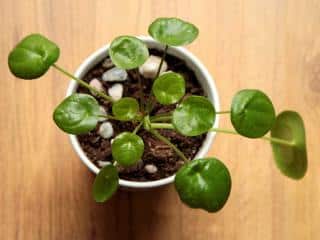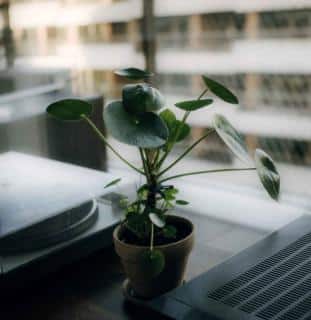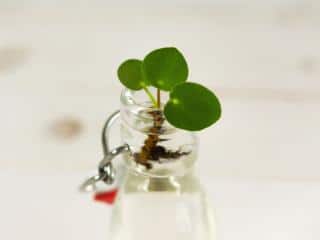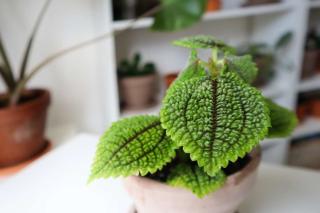

Pilea peperomioides, also called “Chinese money plant”, is a very ornamental plant which is ideal in designer settings.
Pilea basics in a few words
Name – Pilea peperomioides
Family – Urticaceae
Type – succulent plant
Height – 12 inches (30 cm)
Soil: light, well-drained – Exposure: well-lit – Foliage: evergreen
Pilea plants are called money plants, but they won’t cost you much to care for!
Pilea will slowly grow larger if you provide it slightly larger pots every year. If not, size will stabilize and offshoots will sprout to replace older stems.
 You may repot your pilea just after having purchased it if you’ve purchased it when not in flower (a rare event anyways).
You may repot your pilea just after having purchased it if you’ve purchased it when not in flower (a rare event anyways).But you can also wait: for this plant, pots are usually designed for another two good years of service before growing too small.
In summer, bring your pilea outside earliest in May to make sure it doesn’t freeze. Find a spot that is well-lit but that doesn’t get direct sun during the hottest hours.
The Pilea plant is native to South-West China, and it thus bodes best in climates where summers are warm and winters are mild.

Pilea loves sunny emplacements as long as they’re not scorching hot, so avoid placing it behind a window that faces full south, especially in summer.
Pilea can be propagated by preparing 2-3 inch (6-7 cm) cuttings from young stems. It is usually quite easy to get the plant to sprout roots.
 Slice young stems that are already bearing a couple leaves off with a sharp and disinfected blade. Proceed carefully because these young stems are delicate to handle.
Slice young stems that are already bearing a couple leaves off with a sharp and disinfected blade. Proceed carefully because these young stems are delicate to handle.
If you wish for the plant to keep a compact, bushy bearing with many branches, keep pinching young shoots off. Every time a couple leaves unfurl, nip the bud so new stems will appear on the side.
Pinching means snipping the bud off with your fingernails, short blade or small scissors. This stop the stem’s growth and forces the plant to branch out.
Here is how to fight these mites and ticks off: red spider mites.

Pilea peperomioides is the typical example of a plant that first spread thanks to passionate amateur gardeners who shared cuttings without the knowledge of professional botanists.
Although the Pilea genus numbers over 600 different tropical species, the most common one and therefore the one most appreciated as an indoor plant is the peperomioides variety.
However, it’s also possible to find crawling pilea varieties that look wonderful in hanging pot arrangements.
A rather fast-growing plant, your pilea should reach its adult size – about 12 inches (30 cm) – within about 2 years.
Tradition says that burying a coin under a pilea plant will grant prosperity to your household. Why not try it? If it works, give your pilea a share of the tidings: give it a gold-covered pot!